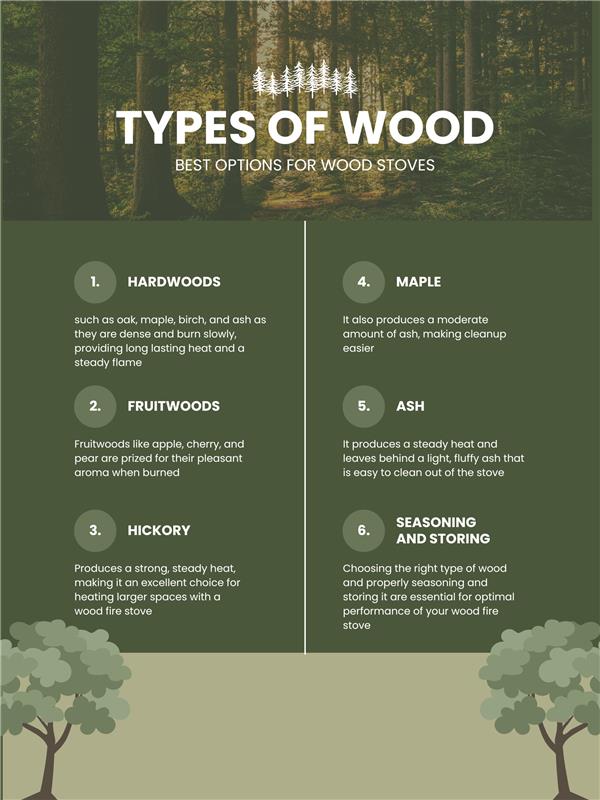Best Types of Wood for Wood Stoves: Efficient Burning

Wood selection is crucial when it comes to using a wood fire stove efficiently and effectively. Not all wood is created equal, and choosing the right type of wood can significantly impact the performance of your stove. Let’s outline the best types of wood to use in wood fire stoves, as well as provide tips on seasoning and storing wood for optimal performance.
Hardwoods:Hardwoods such as oak, maple, birch, and ash are ideal for wood fire stoves. They are dense and burn slowly, providing long-lasting heat and a steady flame. Hardwoods also tend to produce less creosote buildup in chimneys compared to softwoods.
Fruitwoods: Fruitwoods like apple, cherry, and pear are prized for their pleasant aroma when burned. They also burn cleanly and produce a steady heat, making them a popular choice for wood fire stoves.
Hickory:Hickory is known for its high energy content and long burn times. It produces a strong, steady heat, making it an excellent choice for heating larger spaces with a wood fire stove.
Maple:Maple wood burns hot and produces a steady flame. It also produces a moderate amount of ash, making cleanup easier.
Ash:Ash wood burns well even when green (freshly cut). It produces a steady heat and leaves behind a light, fluffy ash that is easy to clean out of the stove.
Seasoning and Storing Wood:
Seasoning: Seasoning wood involves allowing it to dry out properly before burning. This process usually takes at least six months to a year, depending on the type of wood and the climate. Seasoned wood burns more efficiently, producing more heat and less smoke.
Splitting: Splitting wood into smaller pieces helps it dry out more quickly and evenly. It also makes it easier to handle and stack.
Storing: Store seasoned wood in a dry, well-ventilated area, such as a woodshed or covered woodpile. Keep the wood off the ground to prevent it from absorbing moisture.
Avoid Green Wood: Green (unseasoned) wood contains a high moisture content, which can lead to poor burning efficiency, increased creosote buildup, and more frequent cleaning of the stove and chimney.
Choosing the right type of wood and properly seasoning and storing it are essential for optimal performance of your wood fire stove. By selecting hardwoods and fruitwoods, and following proper seasoning and storage practices, you can ensure that your wood fire stove operates efficiently and provides you with a cozy, warm fire all winter long.
